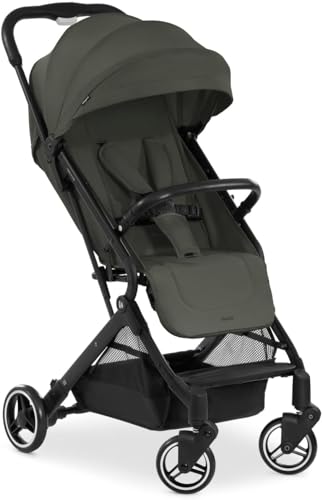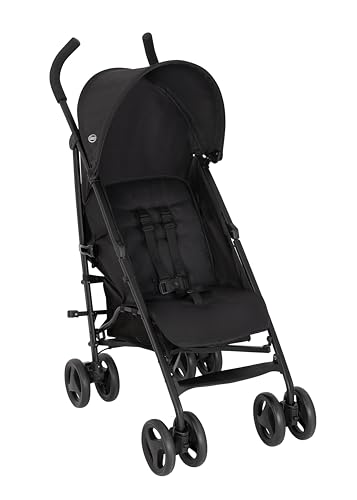10 Things That Your Family Taught You About Pushchairs From Birth
페이지 정보
작성자 Irving 댓글 0건 조회 6회 작성일 24-09-21 04:52본문
 Choosing pushchairs from birth (continue reading this) For Your Baby
Choosing pushchairs from birth (continue reading this) For Your BabyA stroller, buggy or pushchair is a way to transport infants. Newborns need to lie flat, which is the reason strollers pushchairs come with the bassinet or carry cot and some have a frame that you can connect the cot to.
Once a baby has good head control and can sit up and sit up, they can use an infant pushchair that has seats that face away towards or away from you. Many have handy features such as swivel wheels or enclosed carrycots and can often be used in 3 in 1 systems.
Rear-facing
There are a variety of options to choose from when you are deciding on a pushchair for a brand new baby. These include prams, buggies, pushchairs and strollers. Although the terms may seem similar, there are important distinctions. A pram is designed to lay flat, whereas a stroller provides a sitting position. Some babies can be seated in both, but others need to use a carrycot until their necks and heads are strong enough to be supported in a seated position.
The majority of experts agree that it's recommended to use a pushchair with a parent's face for infants as young as the age of a few months. Babies are drawn to their parents' faces and appreciate the visual connection can be created. Eye contact is crucial for their emotional development as they learn to process the stimuli around them. As they observe their parents interact with each other and interact with each other, they also begin to develop their language skills.
When babies can see their parents and feel secure and confident. They know that they can rely on their parents to safeguard their children and guide them through their environment. This early confidence can help a child grow in confidence and feel well-being when they become toddlers and begin to explore the world.
A pushchair that is positioned for parents lets you easily observe your child while they are in their seat. You can quickly check if your child is safe and happy. You can also ensure that their hat isn't over their eyes and the wind isn't blowing on their face. Babies who can see their parents are more likely to fall to sleep, as they feel comforted by the familiarity of their faces.
There are plenty of options if you want to keep the baby in a pushchair with its parent for as long as is possible. Some are designed to be able to change between forward-facing and parent-facing while others have an extendable footmuff for cold weather or a rain cover to keep the elements out. The Eezy S Twist+2 is an excellent model of a flexible pushchair that can switch from a parent-facing unit to a forward-facing seat unit with the flick of the lever. It can be equipped with a Cocoon S Car Seat, Cot S Carrycot, or the carrycot for a four-in-one travel system.
Forward-facing
A forward-facing pushchair lets babies to explore their surroundings and enjoy the sights, smells and sounds around them. Baby can also view his parents, which is crucial for social development. Based on their individual developmental milestones, the majority of babies will be able to move from a newborn pram or carrycot to a forward-facing pushchair approximately six months. This is the time when they have acquired enough neck and head control to be able to safely sit in a forward-facing position.
Research suggests that when babies face their parents in a front-facing pushchair, they are more likely to engage in conversation and have a reduced heart rate, which suggests that they feel less stressed. They also are more attentive to what's happening around them and with their parents. This helps stimulate their minds and improve their communication skills. Parents are more likely to talk with their child if they can make eye-contact with them, which can be reassuring and comforting for them.
It is possible to use a pushchair with a front-facing seat since birth. This lets you go on longer walks. It is possible to bring your child along shopping and for other activities that require walking. A stroller or pushchair egg can also allow your child to participate in the same activities as their older siblings, which will help build their self-esteem and confidence.
You should choose the pushchair that comes with many accessories, including an infant blanket, the footmuff and seat liner. When the weather is hot, a hood or parasol will help protect your baby. Choose a parasol with an SPF rating or UV50+, and make sure it's made to fit your stroller and is simple to attach. Many brands offer a range of accessories, some of which may be included in a bundle with the pushchair, whilst others are available on their own.
Many pushchairs can be converted into doubles when you add an additional seat unit or carrycot. This is particularly useful for families who are expecting another child shortly after the first. Some models include everything you need to make the conversion, while other models have a separate converter kit.
All-terrain
If you live along an unpaved road, take walks in the woods or go hiking a lot then you'll require a pushchair that is designed for rough roads and rough terrain. All-terrain pushchairs are built to handle any terrain, and come with features such as suspension to cushion bumpy rides for your child, so they don't shake up in the same way. The seat is angled to evenly disperse the force of the bumpy terrain over the head and neck of your child.
Most strollers for all terrains are three-wheelers, with a front wheel which can be locked and swiveled into place to provide maximum maneuverability. This is vital for rough terrain. They also have bigger tires than the typical pushchair. This means that they are able to handle more rough terrain and offer the most comfortable ride for you child.
When looking for an all terrain pushchair one thing to think about is whether the wheels are foam or air filling. Air-filled tyres feel smoother on rough terrain, but they can puncture more easily if you come into contact with sharp objects. The tyres that are filled with foam are more durable and are less likely to puncture, which is why this is the best travel pushchair option for a pushchair with all-terrain capabilities.
 Some strollers for all-terrain use can be converted from single to double mode for families that are growing. Some can be used as travel systems with car seat adaptors. They are ideal for parents who are new. Some models, such as the Out 'n' About Nipper are suitable for babies due to their flat seats and the fact that you can use a carrying cot with these models.
Some strollers for all-terrain use can be converted from single to double mode for families that are growing. Some can be used as travel systems with car seat adaptors. They are ideal for parents who are new. Some models, such as the Out 'n' About Nipper are suitable for babies due to their flat seats and the fact that you can use a carrying cot with these models.The Nipper includes a variety of accessories for pushchairs, including a footmuff and raincover. It features a one-hand compact fold and is freestanding when folded, meaning it's easy to keep in storage. It also features an adjustable 360-degree swivel front wheel and foam-filled, never-flat tyres. This means you don't have to worry about a puncture on your walks.
Weight
The right pushchair will influence the way you travel as well as the comfort of your child. The right model will allow your child to develop and grow in comfort while ensuring that you take advantage of all the family adventures to be. This is a significant investment, so make sure you choose one that suits your budget and lifestyle.
The first step is to understand the distinction between a pram, pushchair and buggy, as well as the distinctions between a travel system and a single pushchair. This guide explains the terminology to help parents to determine what is the best option for their new baby.
A pram, as its name suggests, is designed for newborns and babies up to six months old. It lets the baby lay flat in bed which is great for their back development. Some models have bassinets that can be used during the beginning of the year to provide your baby with an environment that is safe and comfortable for your baby.
However, be aware that not all pushchairs claim that they can lie flat actually can do this. Be wary of claims from manufacturers that a pushchair will recline flat. Always look over the fine print to discover what it actually means. Some pushchairs shop can only offer a small amount of recline, which is better than a seat with a full recline.
If your baby is able to sit without assistance, it's the right moment to put them in the pushchair. This usually occurs between three to four months. However, some babies will start sitting up earlier. You should buy a pushchair which can convert from a carrycot to the seat. This will give you more flexibility and help keep your child secure until they are ready to go forward.
Parents like a lightweight pushchair with just one pedal to brake, particularly if they want to chat or carry shopping bags in their hands. Our MFM home test Jessica gave this pushchair the thumbs up, saying "it performs flawlessly, with a lovely, smooth ride and the one-handed fold is a dream". The lightweight model comes with TruRide tyres that are tough, puncture-resistant and provide high performance.
댓글목록
등록된 댓글이 없습니다.

